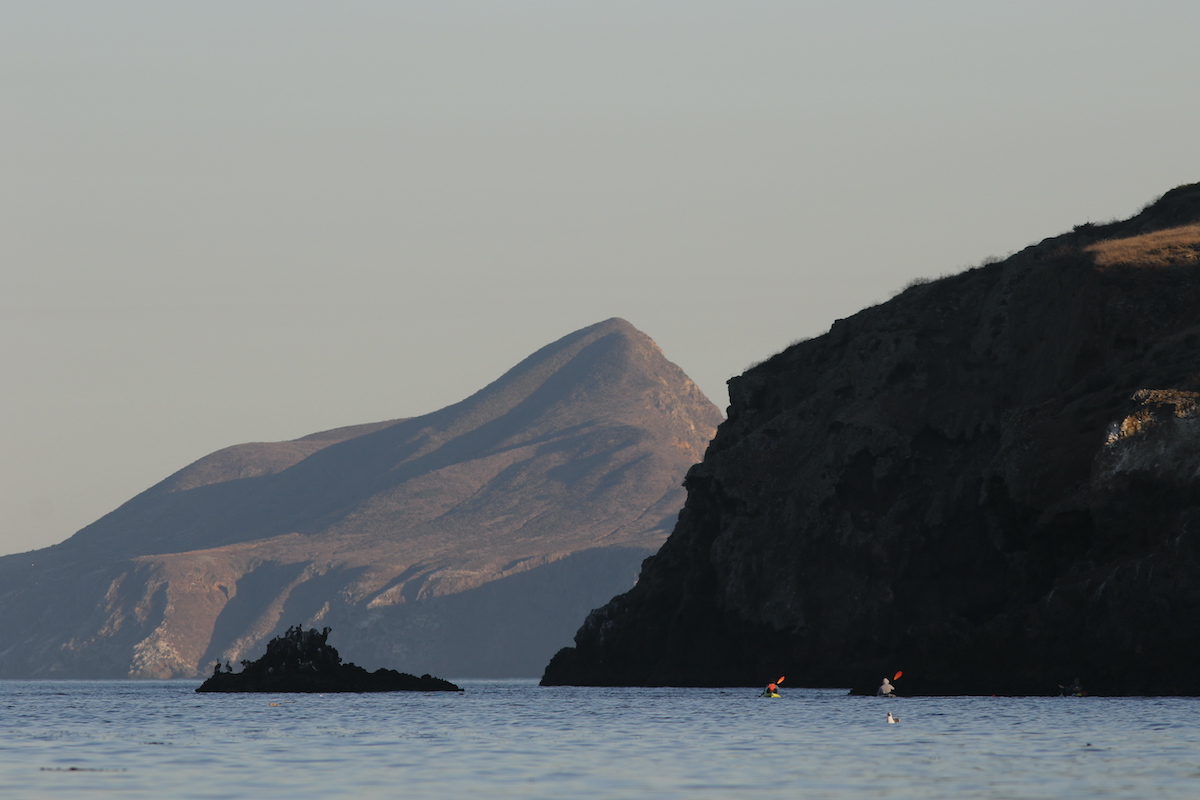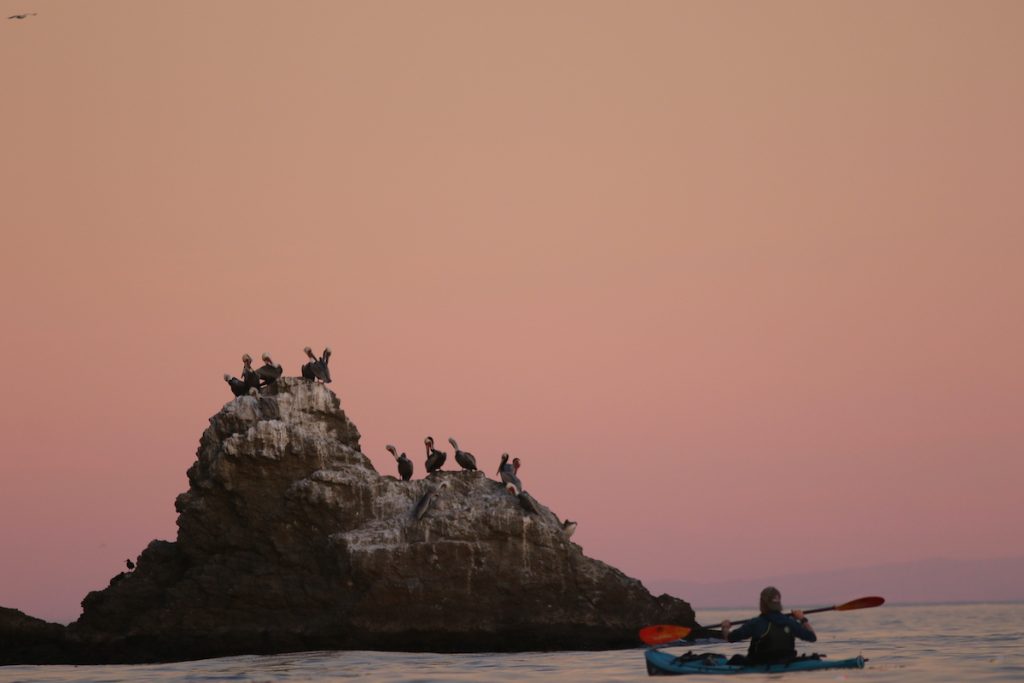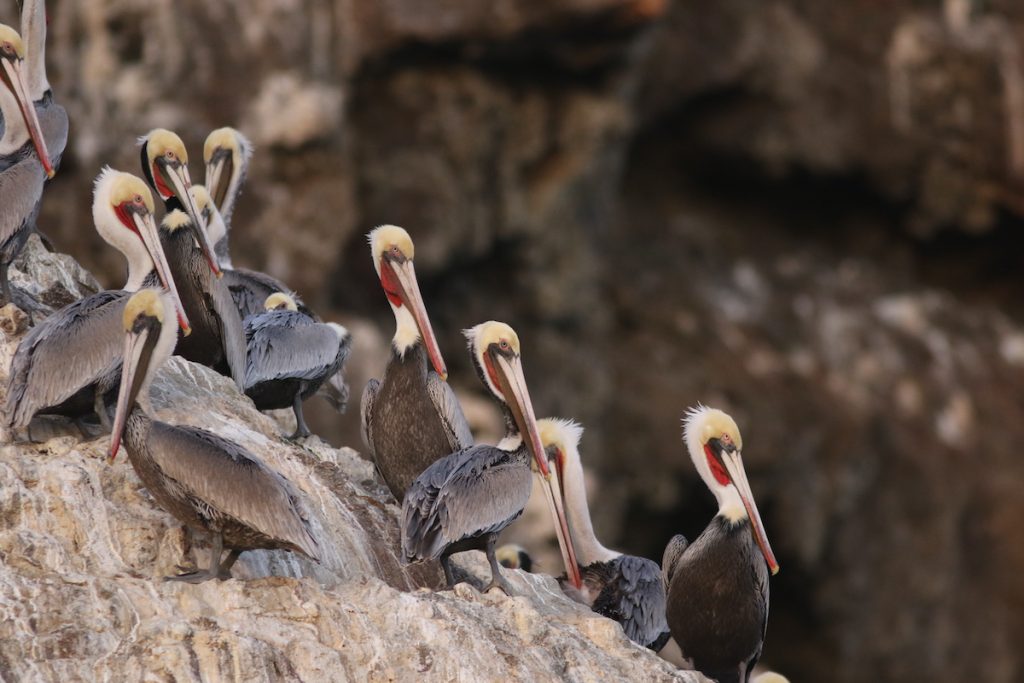Alluvial Alternatives

The Channel Islands National Park has more sea caves documented than anywhere else in the world, with close to 300 grottos. However, there isn’t a toothy grotto quite like the geological feature that’s wave-battered into the sheer, 200-foot-tall cliffs of West Anacapa Island.
As I kayaked inside the dark, dank sea cave at dawn, I was instantly enthralled by the rich, soft, yellowish loam cascading from its lofty ceiling to the calm, cool emerald-green waters below.
The otherworldly alluvial fans inside the massive cavern broadened into several separate fans, encompassing the entire back end of the massive, weather-beaten sea cave.
Keeping Things Fresh
It had been several years since I’d kayaked around Anacapa Island, the second smallest isle in the national park. Although the west end of Anacapa is only four miles east of the southeastern tip of Santa Cruz Island, the largest of California’s Channel Islands. I often forget about it. Maybe because it’s so close, I sometimes tell myself “I’ll get to it next time” – or – “It’s just right there. It’s not going anywhere.”
Unfortunately, time can blow by in a blur like a howling northwest wind before experiencing those potentially magic moments. So, this past fall I made a pact with myself to get after some things I’d been dwelling on, procrastinating on, or neglecting; goals that required a little more effort. Visualizing a moment, and then seeing it through to fruition meant I scaled a mountaintop or paddled a passage, small hurdles within the journey.
After Hours

So, after leading a kayak tour at Scorpion Anchorage, I quickly cleaned up kayaking gear, loaded my kayak up with camera gear, a little food and water, and paddled the seven miles before dark to this specific sea cave on West Anacapa Island. The isle itself always appears so close, especially when it’s one of those classic, clear days during the autumnal equinox, where distant seascapes reveal the fine detail in its rugged, windswept topography. It was as if I could splash water on the island with the blade of my paddle. However, with short days and winter solstice approaching, I felt the urgency to get there before it got too dark. So, my paddling rhythm felt anxious. It felt as if I was never paddling fast enough.
Migrating surf scoters, resident California brown pelicans, cormorants, and Heermann’s and western gulls all seemed to be flying to the same spot I was paddling to. Their approach seemed so effortless, like they didn’t care when they arrived. Me, I just wanted to get there, but I knew the ocean wasn’t going to allow me to “simply arrive.”
Currents
Sometimes the currents between the islands are favorable. Sometimes they aren’t. They can be challenging, even frustrating. When they aren’t working against me, it feels as if I’m paddling downhill, and I’m moving effortlessly. Other times, the currents work against me, and it feels like I’m paddling on an aquatic treadmill, as if I’m kayaking into a headwind uphill in the mud.
I experienced both that late afternoon. Halfway across the Anacapa Passage, I was gliding toward West Anacapa Island, but as I grew closer the conditions of the currents shifted. It felt as if I was paddling in place until I could extend my paddle outward and tap the blade on a barnacle-encrusted rock.
There was no surf slamming into the narrow isle that late afternoon. The north and south sides of the island were calm, yet it sounded as if the surf was substantial and roaring. The unpredictable currents swirling around West Anacapa Island were loud. I could see them moving, converging as they rippled darkly around the islet. The currents were such a force that they groaned around the tip of the treeless island.
However, all it took to reach utter silence – and that island solitude – was paddling down the north side of West Anacapa Island.
Sea Cave Innkeepers

Like pelagic centurions, squadrons of California brown pelicans filled the muted stratosphere as others roosted above the teeming intertidal zone, seabird guano cloaking the lichen-hued crags. Most of the gawky seabirds were of age, their heads creamy yellow, the backs of their necks’ deep cinnamon, and their pouches a brilliant crimson red.
They preened and postured waiting for the next dense bait ball of fish to float southeastward, a bounty of sustenance encompassing the island biome. They hovered above and around all the volcanic sea caves, shadowy alcoves, and especially the dank grotto possessing the cascading alluvial fans.
Oddly, a lone bald eagle was perched amongst the pelicans. It had to be a kumbaya moment between the apex predator of the islands and the entertaining pelicans soaring majestically over the northern chain. It was nearly dark and so quiet until the eagle took flight. I could hear its impressive wings flap. It flew out into the Anacapa Passage, toward Santa Cruz Island, four miles to the west, as I followed the steely raptor into the night.







You must be logged in to post a comment.